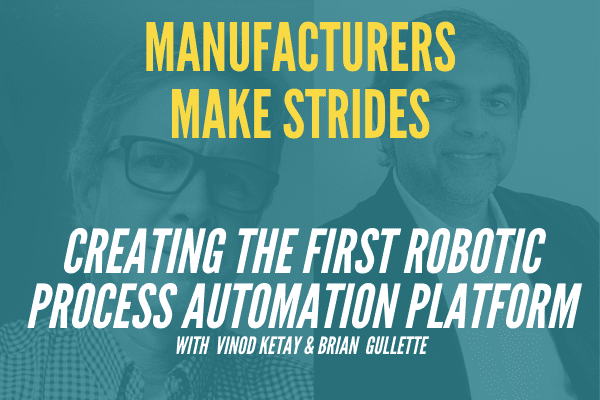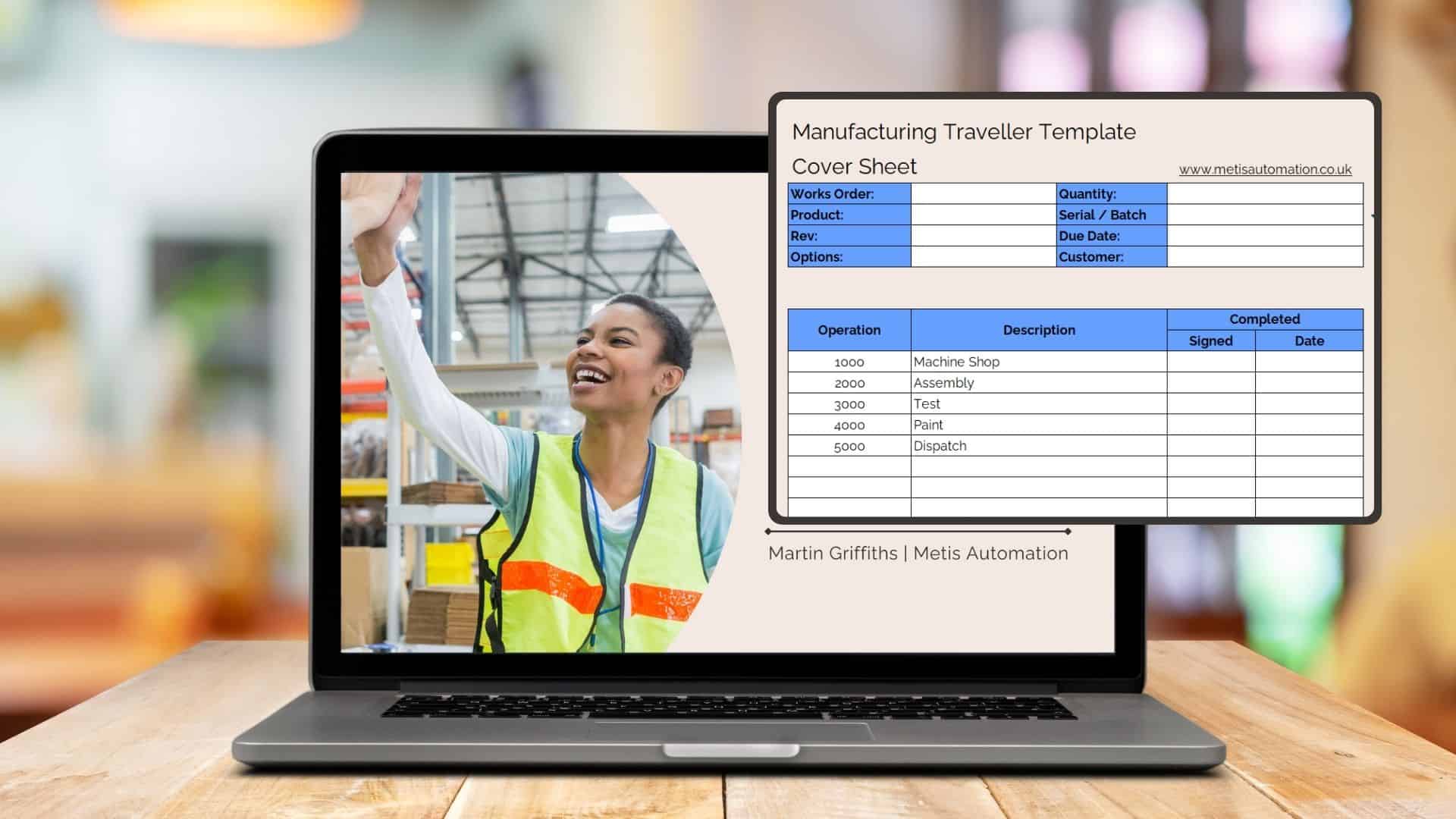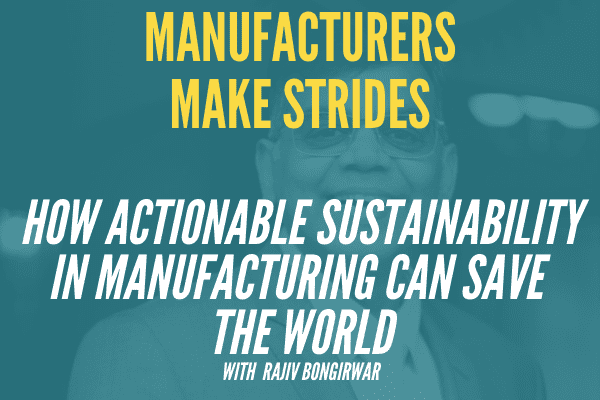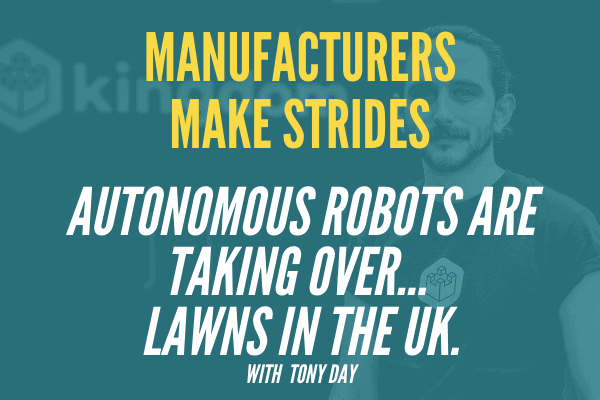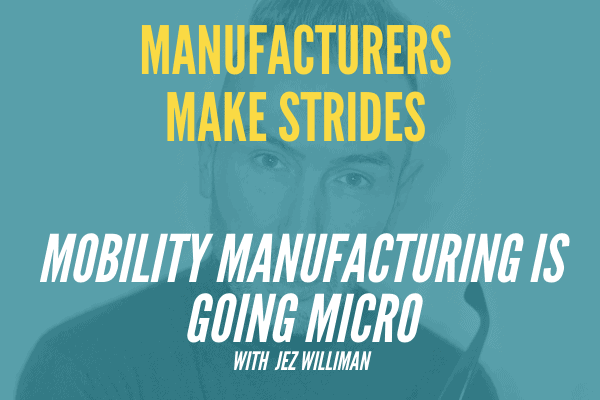
Breaking The Manufacturing Start-Up Mold
Starting a new venture and breaking away from what you know is overwhelming, scary, and often, incredibly rewarding. What are some of the secrets to a successful manufacturing start-up that will not quit? What key lessons will help you break into the space with confidence? Ask John LaFleur. He might just have the answer.
Now the CEO of Fleur Consulting, John brings a wealth of inter-disciplinary skills to the worktable. Not only did he lead the development of the very first full-size, full-electric pickup truck, but he also helped his teams touch on effective and sustainable development that ranges from engineering to design, purchasing, and everything in between.
Ready to find out more about the ins and out of starting a new venture with confidence? Join our conversation to discover the power of reaching out, the need to understand what you’re up against, and the potential for life-changing success that can be achieved when you know where and when to start working.
How did you get involved in engineering and manufacturing?
I have a degree in industrial design and mechanical engineering from the University of Cincinnati back in the early 80s. So, I’ve been at this long time. We were trained to do concept development as well as mechanical design. And through my career in both design and plastics engineering and metal fabrication production, I grew in my different roles throughout the years to a point where I was in leadership. I have a lot of experience in both domestic manufacturing and all different processes. And then, importing from all over the world on that element as well. So that’s what kind of got me into leadership roles with different sectors.
What challenges do manufacturering start-ups face in todays market to cope with competition?
I think it’s an opportunity, not necessarily a challenge. These start-up companies want to think out of the box. My background is industrial design, its problem-solving. I have never approached things as here’s the way it’s been done – we’re doing it that way. I’ve always been very open to suggestions from employees, outside help, consultants and so forth. Of course, your legacy companies, giant manufacturing companies are settled in and they move like icebergs. But, new manufacturing start-ups, people that are on the fringe of new technology, have a huge advantage over the big guys.
The negative is not having as much money, You’ve got to raise a lot of money. So that’s something I’ve been involved in for the last ten years. Reaching out to the financial institution, investors, venture capitalists etc. But I think the opportunity for a manufacturer both domestic and abroad is gigantic. The speed is important. A start-up or a small/mid-sized company can really capitalise on that, to compete with the big guys. And you learn from the big guys. You hire from the big guys. You bring them in and they know how not to do things. Listen to them because they’ll give you the straight answer.
What are some of the key lessons to make start-ups more likely to succeed?
Do your research. Understand the market you’re going after, know who the competition is. Do a thorough market study. That is what I found to be the most important thing, You need to know who your competition is and what the greatest and latest technologies are. In addition to that, you need to reach out. I believe in bringing in an expert from an outside field. I’m actually on a couple of advisory boards for start-up software and high-tech companies. I tell them what hurdles they’re going to face and also help them with fundraising, capital venture opportunities or going public. It helps to have an outside person.
You also want to make sure that you protect your concept idea and your technology IP. Make sure you have all of your ducks in a row when it comes to patents and things like that. And then when you share your technology with outside personnel, make sure that you have an NDA in place with any suppliers or potential customers.
What are your thoughts on handling culture change to tackle growth?
That’s a good question because I dealt with that for the last six years. You had a start-up environment and anybody that was with the big companies, GE or Ford or Toyota, had certain ways of doing things. We got to break them out of that mould. Ask them what worked and what didn’t, what held them up or what progressed them. And they’ll be honest with you. And you got to take that advice and really implement it. You can’t just be freewheeling, you need stability and process. And a lot of the big companies have great processes, they just take too long to do it. And I’m not saying you skirt safety measures or governmental regulations, but you can do things a lot quicker as a manufacturing start-up than a big, traditional legacy OEM.
For example, when we took over the Lordstown Motors factory, there were a lot of guys from GM that stayed there and wanted to work for us. But we had to really vet them because some were so entrenched into the way it was done, and we weren’t going down that route. Others were so delighted. You wouldn’t believe the enthusiasm from people saying, we’re going to do it differently, and you’re going to let me help you put that together. That’s encouraging, it builds camaraderie and teamwork, You need a mix, guys that have been in start-ups and guys that have been in established, big companies. The leadership level must be diverse as well. And then at some point, the sales side is very important. But to begin with, you’ve got to have a good product and good people, Then you can start selling because they believe in the product.
Do you have any kind of tools or techniques that you think can help with this?
There is a graveyard full of the carnage of companies, in the EV space alone, not to mention everywhere else. But you learn from them, you find out, what they did wrong. You do a lot of questionnaires to the customers out there, the potential customers. What didn’t you like about start-ups that you tried? And you bring them into an advisory committee. I put together Duke Energy, UPS, Rider and all different sectors, and had them as an advisory team. And you wouldn’t believe the specifics that were important to them, but not necessarily to us because we were developing.
I’ve also tried true methods of supply chain management techniques and tools, and those are changing. You don’t always have to have the big SAP ERP systems that no small start-up can afford. Most people use their email, and they just track and communicate. It’s just so time-consuming, a burden. There are now lots of software systems and companies out there developing cloud-based supply chain management tools that are very inexpensive and much better than SAP. It works with SAP if you want to go up to the big guys, but the small and medium-sized guys can do it. I’m on an advisory board for a company called Cloud Site, and they’re mainly for supply chain management and import and export, that’s kind of their focus. But what I found was those companies also work with governments, cities, counties and municipalities that are trying to figure out where is their carbon footprint and how are they spending their money.
Those are tools that would not necessarily be in your playbook if you come from big legacy manufacturing. So, keep yourself open to the newest, latest, greatest tools. And I will say this, the younger generation, they are so much smarter and so much more educated in the technical aspect of software and easier ways to do things. You really need to listen to the younger generation when it comes to technology.
What are you working on at the moment?
I retired. I was working 24/7 for about five years, so that put about 20 years on my life! When I got my latest notice from Marriott that I stayed 80 times in a hotel in six months, I thought I need to take a break. So, I do independent consulting, I’m Fleur consulting. I’m also on a couple of advisory boards, and I’m looking at being on a full-time board for a couple of local companies, and
I’m also doing podcast interviews. But I try to stay neutral when it comes to my previous companies. I’m supportive of them, but I try and stay broad in my ideas and thoughts because it could seem like I’m partisan in one way or another. So, I do these paid consulting, hourly calls with the financial institutions out there that want to know where to invest their money. I know all the suppliers and all the OEMs in the business. I also help a lot of recruiters find people for major OEMs because I know of a lot of them, and I’ve hired most of them.
What’s the best way, if people want to ask you any questions, find out a little bit more about you, what’s the best way for people to find you?
I have a personal email. Jlafleur@IX.Netcom.Com. Also, LinkedIn, if they pull up my profile John LeFleure. There is another John LeFleur, he’s about 30 years younger and he’s not in my business. But LinkedIn is a big networking tool that I use, so if somebody reached out to me and they want to talk, I can share my phone number with them over email.

